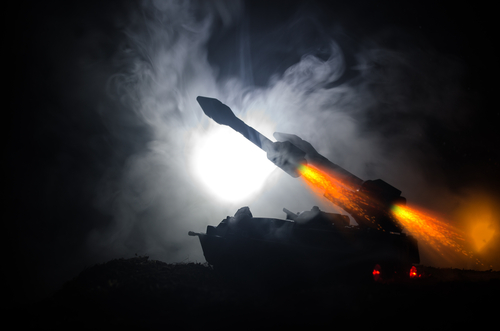In a concerning development, authorities in Norway have reported a mysterious spike in radiation levels along their border with Russia. Traces of Cesium-137, a radioactive isotope, were detected between September 9 and 12, leading to speculation about the source of the radiation. This has raised alarms given the proximity to Russia’s Pankovo test site on Novaya Zemlya, known for testing nuclear-powered, nuclear-armed cruise missiles, such as the Burevestnik, often referred to as the “Flying Chernobyl” due to its potential for catastrophic fallout.
The Norwegian Radiation and Nuclear Safety Authority (DSA) confirmed that the levels of radiation, while still relatively low, were significantly higher than usual. Cesium-137, commonly associated with nuclear incidents, points to a potential link with reactor activity or the mishandling of nuclear material. The proximity to the Pankovo test site has fueled concerns that the radiation may be linked to testing of Russia's Burevestnik missile, which is designed for prolonged flight over extensive distances while carrying nuclear warheads.
⚡️🇳🇴Norway recorded a jump in radiation on the border with the 🇷🇺Russian Federation, – Barents Observer.
Traces of cesium-137, which is included in the fuel for nuclear reactors and the "filling" for the nucleus, were detected. pic.twitter.com/MxdBoMHkWX
— 🪖MilitaryNewsUA🇺🇦 (@front_ukrainian) September 17, 2024
Russia’s nuclear testing history adds further concern. Previous tests of the Burevestnik have been marred by accidents, including a 2019 test that led to the deaths of seven people after a failed recovery attempt of the missile. Russian President Vladimir Putin has championed the Burevestnik as a game-changing weapon, boasting its unlimited range and maneuverability, which makes it difficult for Western air defenses to intercept. However, the experimental nature of the missile, and its previous failures, have heightened anxieties, particularly in neighboring countries like Norway.
This recent radiation spike comes amid a broader atmosphere of distrust between Norway and Russia. Tensions have been simmering due to Russia's ongoing military activities in the Arctic region and the Barents Sea. Although no official explanation has been provided for the sudden rise in radiation, some experts fear it could be the result of routine reactor maintenance or the testing of nuclear-powered weapons. Another theory, posed by some nuclear safety analysts, suggests that minor leaks or accidents at Russia’s nuclear facilities could be responsible.
https://twitter.com/AsgardIntel/status/1836024327981936846
Compounding these fears, the Burevestnik missile, often nicknamed the "Flying Chernobyl," is considered highly dangerous due to its reliance on a nuclear propulsion system, which has caused radioactive contamination in previous tests. Despite these risks, Putin continues to promote this missile as part of Russia's strategic arsenal, touting its ability to evade Western defense systems. The experimental nature of the missile means that even minor tests could result in unintended radiation leaks.
This is not the first time that radiation spikes have been detected in northern Europe. Similar incidents in recent years have led to widespread concern across the region. In 2020, unexplained increases in radiation were reported across Scandinavia, which were never officially linked to any specific incident, though many suspected Russian involvement. Given this history, Norwegian authorities have enhanced monitoring along their borders, and concerns over potential accidents or clandestine military activities remain high.
In the absence of a clear explanation from Russian officials, Norway, along with international nuclear safety watchdogs, continues to investigate the cause of this latest spike. For now, the elevated levels of Cesium-137 serve as a stark reminder of the dangers posed by nuclear weapons testing and the risks that come with living near a country actively engaged in developing these types of weapons. The situation has also reignited debates over nuclear safety in Europe, as nations strive to ensure that even low-level radiation exposure does not pose a long-term health risk.
As the region awaits more definitive answers, the presence of Cesium-137 near the Norway-Russia border underscores the fragile state of international relations in the Arctic, where the line between routine military exercises and potential nuclear disaster grows thinner with each passing incident.

